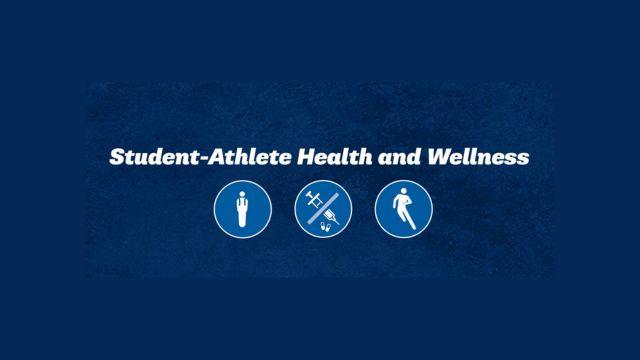
Student-athletes report drop in binge drinking, use of narcotic pain medication and spit tobacco.
Greg Johnson, NCAA
In 1985, the NCAA began conducting studies to examine student-athletes' use of drugs, alcohol and tobacco. The study's 10th and current iteration shows declines in the use of narcotic pain medication and spit tobacco, as well as binge drinking, among student-athletes.
The Association-wide study administered by NCAA faculty athletics representatives began in October 2022 and concluded in June 2023. More than 23,000 student-athletes participated in the study.
Results from the full study will be shared at the 2024 NCAA Convention in Phoenix.
"This important research is part of the Association's continued efforts to support our membership in identifying student-athlete substance misuse trends," said NCAA Chief Medical Officer Brian Hainline. "Such information has been essential in developing substance misuse prevention education and harm reduction strategies and resources to best support our student-athletes' safety, well-being and performance."
Use of narcotic pain medication by student-athletes has decreased in the past decade, with 6% of the respondents reporting use with a prescription within the previous year. This is down from a high of 18% in 2013.
The biggest declines came in student-athletes competing in women's gymnastics and softball. While athletes in these sports continue to be the highest reported users of narcotic pain medication (8% in both sports reported use in the last year), this is down from 18% and 13%, respectively, in 2017.
The study also found lower rates of spit tobacco use among NCAA student-athletes, particularly among men's sports participants.
Overall, 15% of all men's sport student-athletes reported using spit tobacco within the last year, which is down from 22% in the 2017 study. The percentage of users has steadily decreased since 2009.
Student-athletes participating in baseball, men's lacrosse and wrestling have consistently lessened their use of spit tobacco since 2009. Baseball players use dropped significantly from 44% in 2017 to 28% in this study. Lacrosse players' usage of spit tobacco over the past two surveys dropped from 35% to 25%, and wrestlers reported a decrease from 33% to 20%. Men's ice hockey did not see similar declines and maintained high levels of use.
Data collected continued to show a decrease in binge drinking. Since 2009, self-reported rates of binge drinking within the last year have decreased from 55% to 35%.
Binge drinking is defined as four or more drinks for women or five or more drinks for men in one sitting.
Other study results
Self-reported cannabis use by student-athletes within the last year increased slightly to 26% in 2023 (22% in 2013 and 25% in 2017).
Use of marijuana and other cannabis products was highest among student-athletes competing in men's sports, at the Division III level, and those who identified as attending college in a state where personal and medical use are legal.
While the use of almost all tobacco and other nicotine products is down, vaping nicotine rose. Daily vape users increased from 0.8% in 2017 to 6.0% in 2023.
Overall, NCAA student-athletes reported less use of alcohol, tobacco and recreational drugs than the general college student population surveyed by the American College Health-National College Health Assessment III (2023) and the Monitoring the Future Panel Study (2022).
The APPLE Training Institute, developed and coordinated by the University of Virginia's Gordie Center and funded by the NCAA, is a national substance misuse prevention and health promotion conference for student-athletes and athletics department administrators.
APPLE incorporates the data collected from NCAA studies of student-athlete substance use for its prevention strategies programs.
"The trend data are especially helpful this year to learn about post-pandemic student-athlete behaviors," said Susie Bruce, the director of the Gordie Center at Virginia. "It is critical for our participants to learn about these positive trends and healthier social norms in order for them to develop evidence-informed substance misuse prevention action plans to implement when they return to campus."
More information about the study can be found on the NCAA research website.
_______________________
Original article can be found here.
